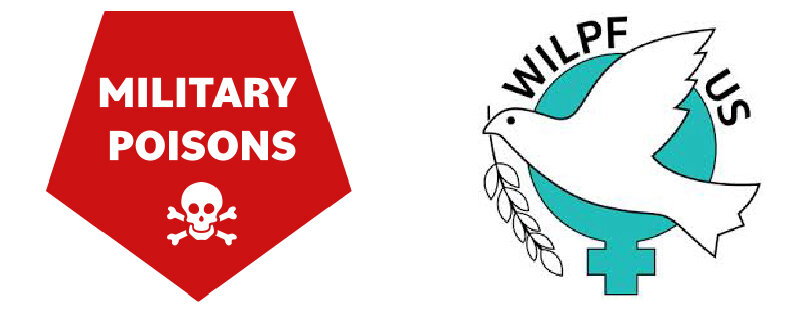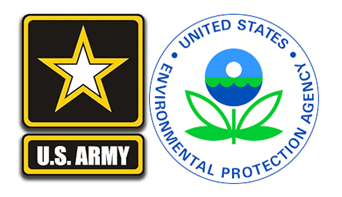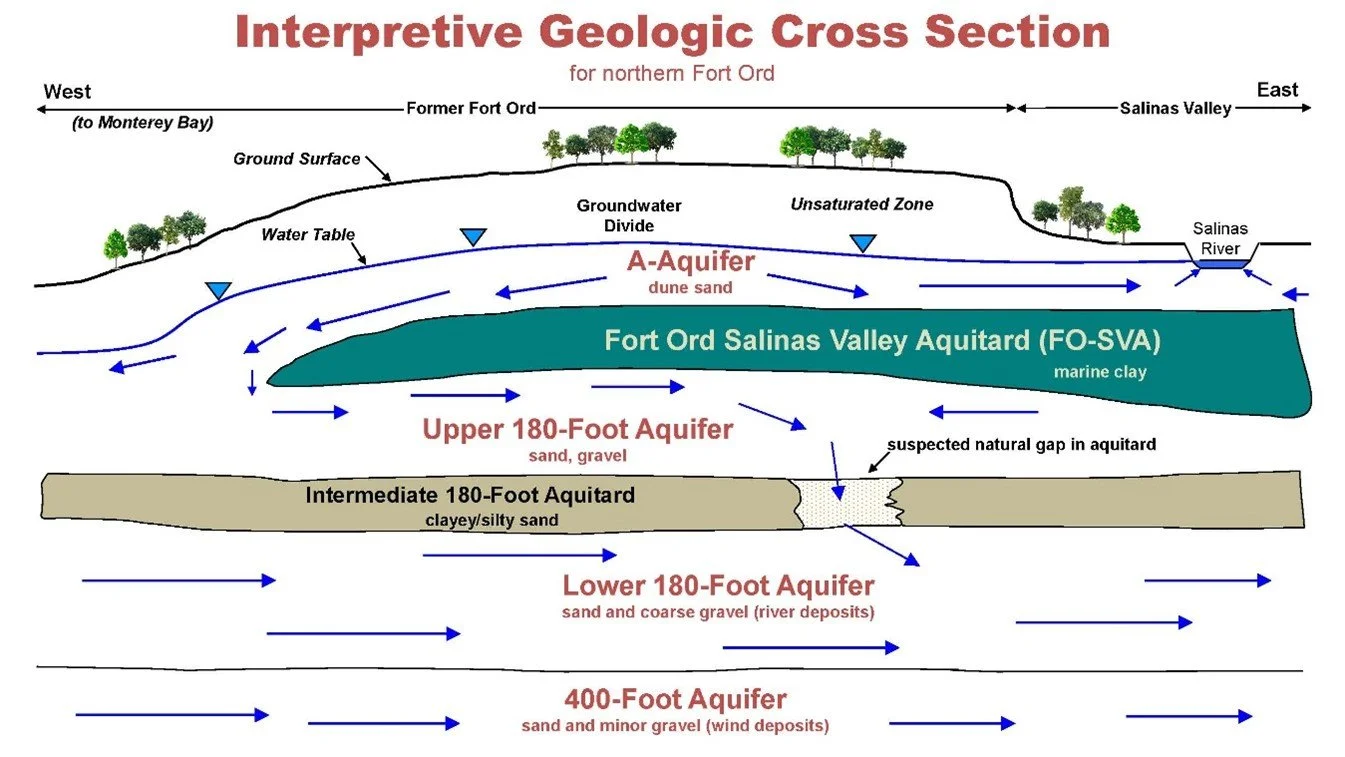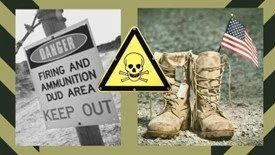Testing at Fort Ord
We will visit the former Fort Ord in early October to test
for a variety of chemicals.
If you know anyone who lived at Fort Ord and is now ill, please share this article with them—and, if they’re able, invite them to support our testing campaign described below. Please Share!
By Pat Elder
August 25, 2025
We superimposed an Army plume map over a Google Map for people to gain a better sense of the potential threat to their neighborhoods. The shaded areas indicate historical maximum plume extents, while solid boundary lines represent the plume extents as of August, 2023.
The blue, green, and purple areas represent the Carbon Tetrachloride (CT) plume.
The red, tan, and blue areas describe the Trichloroethylene (TCE) plume.
Groundwater flow is generally eastward toward the Salinas Valley aquifer system, so the CT and TCE plumes head eastward.
Source: Same as above.
This area is southwest of the area shown above. The “Site 2/12” Perchloroethylene, (PCE) plume is shown in orange along the east side of State Route 1, while the 2/12 TCE plume is shown in brown. Site 12 is the former Fort Ord landfill, located east of the highway. The 2/12 TCE plume originates in the old landfill area, then migrates southwest beneath the highway. The 2/12 PCE and TCE plumes flow southwest toward the coast, however, the concern is less about ocean contamination and more about the impact to municipal drinking wells.
U.S. Army - “The remedial actions conducted by the U.S. Army at Fort Ord—including soil, groundwater, landfill, and vapor controls—continue to be protective of human health and the environment, and land overlying the former contamination zones can be safely used for residential development..”
U.S. EPA - “Land overlying groundwater contamination at Fort Ord can safely be used for residential development, regardless of NPL (Superfund) status, as long as that use is consistent with the Base Reuse Plan and land use controls specified in property deeds.”
_____________________________________
Volatile organic compounds (VOCs) in air and water at Fort Ord
Governmental agencies like the Environmental Protection Agency, the Agency for Toxic Substances and Disease Registry and The California Department of Toxic Substances Control have not met their mission to assess and protect the communities currently on the former Fort Ord from the harmful health effects of exposure to hazardous substances.
Though the DoD and ATSDR have looked at groundwater contours and contaminant levels for volatile chemicals such as TCE, PCE and CT, DoD and ATSDR have not performed vapor intrusion studies or a review of volatilization to the indoor air pathways inside residential homes at Fort Ord. Vapor intrusion happens when toxic vapors escape from underground contamination and seep into buildings where people may inhale them.
The absence of studies in areas where people actually live is a serious oversight, placing current and future residents of the former Fort Ord at risk from VOC-contaminated soil and groundwater.
A special thank-you to Denise Trabbic-Pointer for her research.
This Vapor Monitor can be worn as a badge near the breathing zone to measure personal exposure, or placed in a room to measure area concentration.
We will analyze indoor air using monitors like this one to detect more than a hundred compounds.
In addition, though both the Marina Coast Water District and the Seaside Municipal Water System say the latest water quality data show their compliance with health standards, we want to test water in people’s homes for 45 different volatile organic compounds including TCE, PCE, and CT. The tests also analyze various petroleum compounds like Benzine, Toluene, Ethylbenzene, and Xylene. (BTEX). If these chemicals are present, heating water increases volatilization of these substances, which means that taking a shower and boiling water can be hazardous.
Finally, we will test the tap water for 55 PFAS compounds.
Here’s the list of tests we’ll employ:
VOC Water Test Kits $149
Home vapor monitor for multiple VOC’s 125
PFAS tap water and surface water test 70
Total $344 per home - We’ll cover the cost and protect your identity. Just get in touch!
History of Contamination at Fort Ord
From 1917 to 2004, roughly 1.5 million soldiers trained at Fort Ord, which is severely contaminated by a legacy of toxic military activities. The Army showed little regard for protecting the environment or its soldiers and dependents, routinely using the VOCs discussed above in everything from degreasing engine parts to cleaning linens.
The Army also turned to PFAS compounds for many of these applications, quickly recognizing that these chemicals were in a league of their own. By the 1970s, the military understood that nothing extinguished fires, cleaned engine parts, or repelled water more effectively than PFAS. The secret lay in the nearly unbreakable bond between carbon and fluorine atoms — the strongest bond in chemistry. Unfortunately, these same qualities make PFAS extraordinarily persistent in the environment, adding to the tragic legacy already left behind by VOCs at Fort Ord.
Fort Ord’s Aquifers
Rainwater soaks in the ground, eventually reaching a layer of rock or clay that is so dense that water can’t move through it easily. That “blocking” layer is called an aquitard. The water begins to collect on top of that layer, filling up the spaces between grains of sand, gravel, or more porous soil above it. When soil or rock layers hold water this way, scientists call them an aquifer.
An aquifer is like an underground reservoir. The groundwater slowly flows through the tiny spaces between soil and rock grains, similar to how a river flows, but at a much slower pace, sometimes just a few feet per year.
When harmful chemicals like carcinogenic VOCs are spilled on the ground, rains cause them to leach into the soil and the aquifers. Many of these chemicals can also vaporize and move upward through the soil into our homes and neighborhoods.
The deadly A-Aquifer is the shallowest aquifer, between 60 feet and 100 feet deep. During the 1940s through the 1990s, groundwater from the A-Aquifer was pumped for non-potable uses, including watering lawns, landscape irrigation, and vegetable gardens on the former Army base. This practice persisted even after contamination was known to those in charge, partly because the water was considered “not for drinking,” but soldiers and their families were not informed. Families in military housing often maintained backyard gardens. Soldiers and dependents consumed fruits and vegetables watered with the carcinogens. VOCs, PFAS, and other chemicals also vaporized up through the sandy soil, contaminating the air in their neighborhoods with these toxic chemicals.
The Army poisoned people who lived here. Many are sick and dying today.
The Upper 180-Foot Aquifer used to be safe, but contamination from the Army has made it unsafe as a drinking water source.
The Lower 180-Foot Aquifer has been found with TCE concentrations of 0.57 parts per billion (ppb) to 1.8 ppb in Marina Coast Water District production wells. TCE is lethal; like PCE and CT, it is a carcinogen The EPA’s maximum allowed contaminant level for TCE is 5 ppb, although most scientists now recognize this is not protective of human health. This number established in 1989 was set primarily on cancer risk models available at that time. It has not been updated, despite newer, compelling toxicological data.
The California Office of Environmental Health Hazard Assessment's Public Health Goal for TCE at 1.7 ppb in drinking water. New Jersey has adopted a groundwater cleanup criterion of 1 ppb for TCE. Minnesota has established a non-mandatory health‑based guidance value of 0.4 ppb in drinking water for TCE. No safe level is known.
400-Foot Aquifer According to the DoD Fort Ord cleanup website, no contamination has been detected in this aquifer, although this is likely only a matter of time.
PFAS is in a league of its own. It is prevalent in the groundwater and the air, although we will only test for it in water while we’re taking samples at the old Fort Ord. Air testing is cost prohibitive.
----------------------
Compelling evidence of toxic vapor has been reported.
Site 2/12, along State Route 1 is one of the locations where vapor phase measurements were taken previously. Site 2/12 is where the highest levels of TCE in groundwater were historically found (as high as 360 ug/L (ppb) and where high TCE and PCE levels still exist.
The retail stores Michaels, Kohl’s, Best Buy, and Target along State Route 1 were built in 2007-2008, just a few years after the base closed in 2004. Studies performed by the Army in 2013 and 2015 concluded that there was no unacceptable risk to indoor receptors – in other words, for people working and shopping at these commercial businesses.
It is important to note that in a commercial establishment, on a day-to-day basis, people are exposed for a shorter period of time than in a home. It is also important to note that elderly persons, infants, and children, and people with pre-existing medical conditions would be at greater risk at lower VOC airborne concentrations.
The graphic below shows PCE and TCE concentrations in micrograms per cubic meter (µg/m³) of air in front of the Michaels store.
March 2024 Soil Gas TCE/PCE Concentrations – Fort Ord Cleanup. TCE was recorded at 970 µg/m³ in the air in front of Michaels.
TCE has been recorded as high as 1,200 µg/m³, while PCE topped out at 1,100 µg/m³ Fort Ord Cleanup, May, 2024
1,200 µg/m³ of TCE was recorded in the soil gas outside of Michaels.
A TCE concentration of 1,200 µg/m³ in soil gas signals a potential vapor intrusion risk. Outdoors it quickly dilutes, so the danger isn’t from breathing open air. The concern is that TCE vapors can move from the soil into the buildings. At these levels, short-term risks include effects on developing fetuses, and longer-term risks include kidney cancer, liver problems, and immune effects.
If you know people who lived at Fort Ord and who are sick, wish them well. Please have them read this article and ask them to chip in a few dollars for our testing campaign described herein. You’ll find the link to donate at the bottom of our homepage.
If you know people who live in the immediate area, please share our work with them. Ask them if they’d be willing to have us test their air and water.










